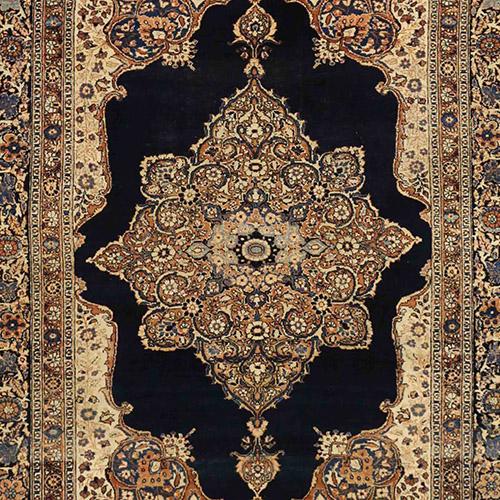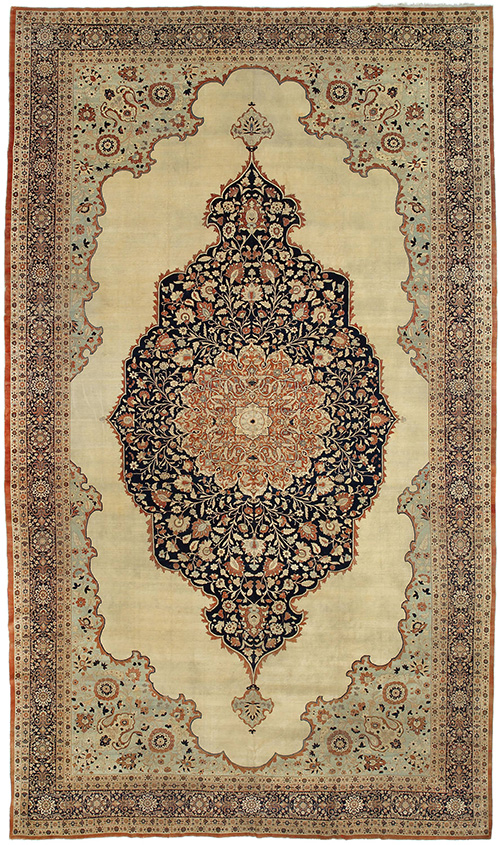

Tabriz Rugs
Situated in the far northwest of Iran, in the province of East Azerbaijan, the city of Tabriz has been a renowned centre for the production of fine Persian rugs and carpets since the 12th century.
The city’s ancient weavings were so highly regarded that during the Safavid Dynasty (1501-1736) Tabriz weavers were commissioned to supply carpets and rugs for the Shas’s palaces and important holy sites.
The techniques and designs of Tabriz rugs and carpets are often handed down like an heirloom from generation to generation and were a source of immense familial pride, not to mention status. As their designs were a family tradition, Tabriz rugs were seldom woven from a sketch of drawing, since their patterns were committed entirely to memory.
Hand woven in wool sourced from the sheep that traditionally grazed on the hills and mountains to the north of the city, Tabriz rugs are famed for their short, rough ground and the remarkable knot density of their construction.
 The unusually high number of knots not only ensure the carpets rigidity but also means that these beautifully designed creations are significantly more hard-wearing and durable than many of their contemporaries.
The unusually high number of knots not only ensure the carpets rigidity but also means that these beautifully designed creations are significantly more hard-wearing and durable than many of their contemporaries.
Commonly woven with an ivory, red, indigo or navy-blue ground, Tabriz designs varied dramatically with many antique examples drawing inspiration from the writings of the great poets or the hand painted motifs that adorned their book covers.
The most familiar design is formed around a central lozenge, known in Persian as the turanj, literally meaning citron or lemon. The design radiates out from the medallion terminating at the corners with matching, symmetrical lachak, which is the Persian term for a triangle.
It is said that the central lozenge is designed to represent the moon with the surrounding vines and palmettos depicting fish at night, rising to the surface to admire its reflection.
In the late 19th century, enterprising merchants realised the rewards available through trade with European and North American markets. They encouraged Tabriz’s leading makers to create designs in soft, muted tones such as cream, beige and crimson, to better suit western domestic designs.
The resulting designs proved hugely popular, and no fashionable home was complete without a fine Tabriz carpet. The city’s peerless tradition for fine rug and carpet weaving was further cemented in 2016 when the World Crafts Council awarded Tabriz the status of World City of Handicrafts and Carpet Weaving.
Click here to browse a collection of Tabriz carpets and rugs currently available from BADA members.

